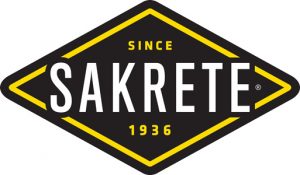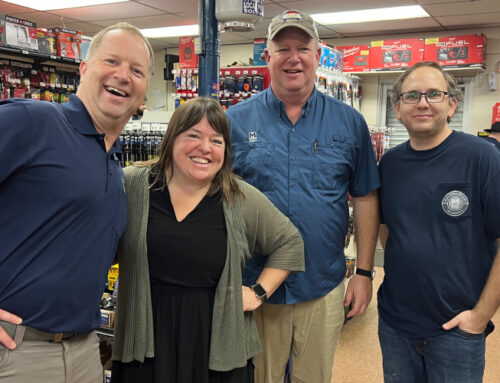
Article sponsored by Sakrete.
In the human body, atrophy occurs when a person does not use a muscle for a period of time, resulting in limited or lost function. Atrophy of sorts can also occur in the workplace; when employees aren’t working toward goals and continually growing in their roles, they can become complacent and inefficient. Employee development and training programs are crucial to keeping your employees engaged, growing and learning. They also help retain quality employees, improve customer service and add to your operation’s bottom line.
Studies show employees want to grow, but companies aren’t providing the right training tools. A study from PwC found that 74 percent of workers are ready to learn new skills or retrain to remain employable in the future. In Axonify’s 2021 Annual Global State of Frontline Work Experience Study, nearly 20 percent of respondents reported rarely or never receiving additional training, and 36 percent only take part in training during big job changes. Less than half of respondents had access to programs to develop career advancement skills even though more than one-third had requested it.
While new employee training is necessary for new staff members to be able to fulfill their job duties, additional programs that go beyond introductory training can result in more satisfied and productive employees. Training and development programs show employees you are invested in their careers and you want to see them grow and succeed.
No matter the size of your operation, training and development should be a priority, and Paint & Decorating Retailer shares eight best practices for managing a successful employee development program from McCormick Paints, which takes a personalized approach to training.
McCormick Paints has been fulfilling the painting needs for DIYers and contractors in the Mid-Atlantic since 1960. The operation includes 28 stores in three states and Washington, D.C., and caters to architects, designers, painting contractors, commercial and residential builders, property managers and homeowners as a paint manufacturer and retailer.
Focus on employee needs.
Matt McCormick, senior vice president of sales and operations, says McCormick Paints takes a different approach than most larger companies; the management team asks employees what training they want to take part in. McCormick says the surveys are done regularly and informally, with management team members talking with managers, assistant managers, drivers and other employees about what they want to learn in training.
Training covers a variety of topics, depending on what the management team hears from the employees about what they want to learn. For example, the human resources team recently asked for training on how to provide better information to employees about benefit packages and how to handle certain specific workplace situations. Training is also led by different instructors, from management team members to subject matter experts to vendor partners.
The training an employee goes through is tailored to the amount of experience they come in with, and the managers decide which specific training modules they need to take.
Offer a variety of training methods.
Training at McCormick Paints is also offered in different forms, including in-person, hands-on training in a store or out in the field and online training through Zoom or Microsoft Teams.
Vice president Drew Denicoff says the company has also developed a robust library of training videos on Microsoft Teams with over 50 hours of training. The training segments include product training videos from vendors and suppliers and videos from the company’s staff experts on paint and sundries.
Be specific.
All employee training follows two paths, one geared toward sales representatives and the other toward store managers. Denicoff says nearly 70 percent of the content is the same across both programs. The other 30 percent is specific to that department, providing more in-depth and applicable training to those employees.
For example, the sales team takes part in specification training. Specification is a major part of the paint industry, so the company’s technical expert takes members of the sales team out in the field to train on different substrates.
“Sales team members go out on job sites and our technical expert teaches them about the different products or primers that would go on different substrates,” McCormick says. “It’s really interactive, which is how our team prefers to learn.”
Designate a training lead.
McCormick Paints is made up of several different departments, including manufacturing, retail and sales, so having a designated head of training helps keep the program organized and running efficiently.
Denicoff oversees the training programs for the company, and because he talks with trainees throughout the training process, he says he can get a good feel for if they will be a good fit at the company. He checks in to see if trainees are taking notes, passing the tests they need to and finding the answers to their questions. He also meets with store and sales managers to see how training is going from their perspective.
“I think it’s important to have one person orchestrating it, because you’re working with different departments. People fall through the cracks, and I can help prevent that by overseeing the entire process,” Denicoff says. “Being involved in the process also helps me better tailor the training each person needs to do.”
Denicoff also follows up with employees after they complete training and asks them to provide feedback so he can continually improve and update the training programs.
“And they also know they can come to me with any questions they have after training,” Denicoff says.
Provide solid direction.
McCormick says most training sessions end with some type of action item for the employee. The action item could be a quiz or a hands-on activity to show competence and expertise in an area.
“These action items provide a way for the employees to retain more information and put into action what they’ve learned,” he says. “The action items give us a way to measure if the training is effective, the employees are learning what they need to learn and we are getting the retention we need from our team.”
One example of an action item comes from the color matching training. After an employee goes through the training, the company’s color services manager goes to the store and gives them a task to complete. If they pass, they move to a second round of training with another task or challenge, and then they move to a third round. After passing the test for the third round, the employee becomes a color matching expert and receives a certificate.
Use training to build leaders.
McCormick says the company believes in hiring and promoting from within the company and the store manager path of training works to develop leaders from current employees. The 12 to 14-week program provides leadership training that prepares the attendee for a management role in the company. Each week includes structured milestones trainees must attain and complete before moving onto the next stage. Store managers oversee the process and work with the trainees throughout the program. After the completion of the program, trainees will have experienced all aspects of the McCormick Paints operation.
“When they complete the program, they have the ability to tell us what areas of the company they are interested in,” McCormick says. “Through the program, we’re trying to show our team potential career progression and how they can grow at McCormick Paints into different roles throughout the organization.”
Gain buy-in from leadership.
If the leaders of a company are not invested in training, employees won’t see and understand the importance. President and CEO Casey McCormick personally meets with employees going through training and leads several of the training sessions. The regional sales and store managers are also invested in the different steps of the training process, Denicoff says.
“Employees see that buy-in from leadership and it really makes a difference,” Denicoff says. “Especially in today’s world, it’s harder and harder to find loyal employees, so you have to do what you can to make everyone feel like they are a valuable part of your team.”
Incorporate culture into training.
Denicoff admits that training is a big investment but crucial to the company’s success because it shows employees that they are valuable and important to the company. The training programs have helped with employee retention and recruitment at McCormick Paints, and have helped build a team of effective and efficient leaders who are invested in the company.
“I know the program has been enormously successful, because our people have gotten up to speed much quicker than they were before,” Denicoff says. “They tell us the program is much better, that they’re able to sell products that they otherwise wouldn’t have.”
One reason for the success is an integration of the company’s culture into all aspects of any training program. McCormick says the company’s mission is customer-centric and the company strives to serve its customers, environment and community with leadership, innovation and constant improvement.
“The first milestone of the management training program is to know our company goals and core values. We want participants to understand the why behind our company and the mission of the organization, which gives them a sense of purpose,” McCormick says. “When our management team embraces our mission and values, then those principles trickle down throughout the organization.”
Employee empowerment is another key tenet of the company’s values that is achieved through training. The staff is encouraged to make decisions, not micromanaged, which is successful thanks to comprehensive training that sets up employees for success, McCormick says.
“People drive our business and we speak to that value ad nauseum, training our employees on how they can have an impact on the organization, from the littlest thought to the biggest idea,” he says. “We are people-centric from the top down.”
5 Tenets for Successful Training
Whether your employee development program is large or small, here are five aspects that should be a part of any training process to help your employees grow.
- Clearly defined goals. Let employees know what they are expected to learn and take away from training.
- User-friendly channels. Whether online or in-person, make the training easy to follow and engage with.
- Frequent feedback. Don’t wait until the end of training to let employees know how they’re doing; provide consistent reviews so they can improve as they go.
- Engaging content. Even the most dull topics can be more engaging with well-written and presented content.
- Buy-in from leadership. Involve owners and managers in the training process so employees can see their leaders are engaged and believe training is important.
Training Program Tips
Discover the top five components of a successful employee training program here.







